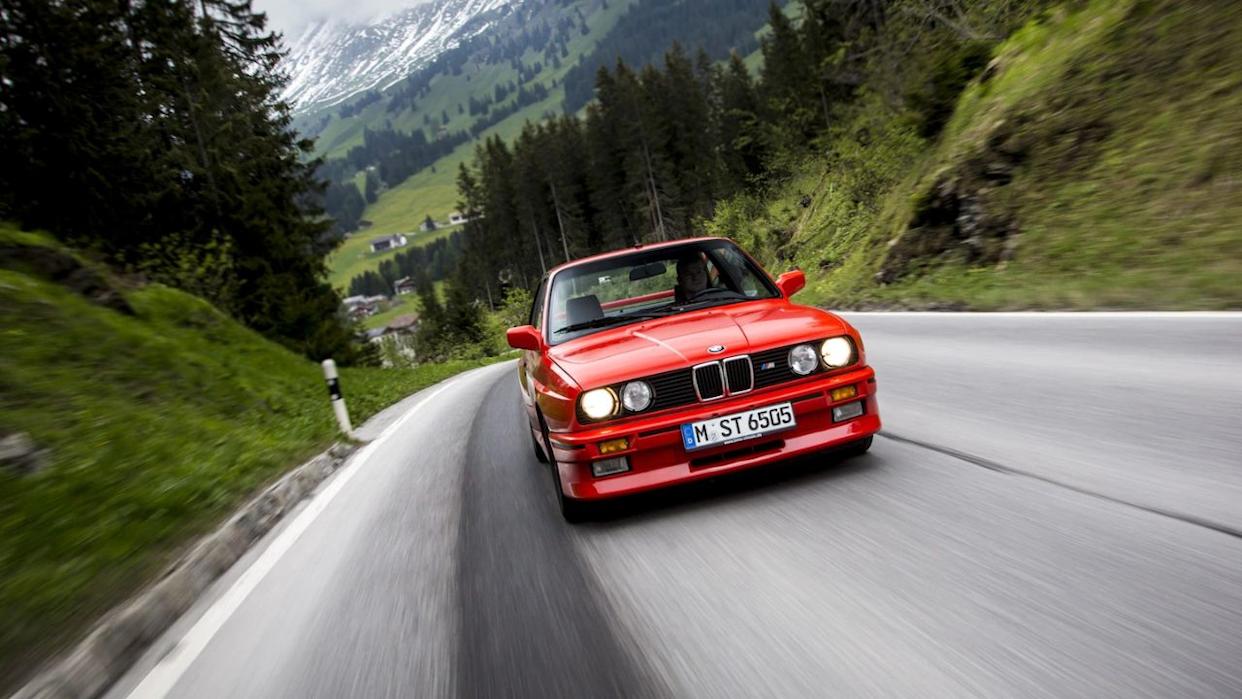
In the 1980s, getting behind the wheel meant you had to drive the dang thing. None of this "select Sport+ mode and let the computer figure it out" nonsense. You had three pedals, a stick, and if you couldn't heel-toe downshift into a corner without looking like a poindexter, well, that was your problem.
This was the era when cars still had souls, before they got lobotomized by focus groups and safety committees (aka fun killers). Every gear change was a negotiation between you and 2,000 pounds of steel, aluminum, and barely contained explosions. Miss a shift? The car would let you know with the subtle grace of a grinding coffee mill. Nail a perfect rev-matched downshift? Pure automotive nirvana.
These machines came from a time when manufacturers assumed their customers had functioning brain cells and maybe even knew which pedal was which. The connection between driver and machine flowed through that gear lever like some mechanical telepathy. We want to celebrate the manual cars that made us fall in love with driving, that made us feel connected in a way no modern car can. Cars that made driving feel immersive, visceral, and more exciting than the destination.
How These Cars Were Chosen
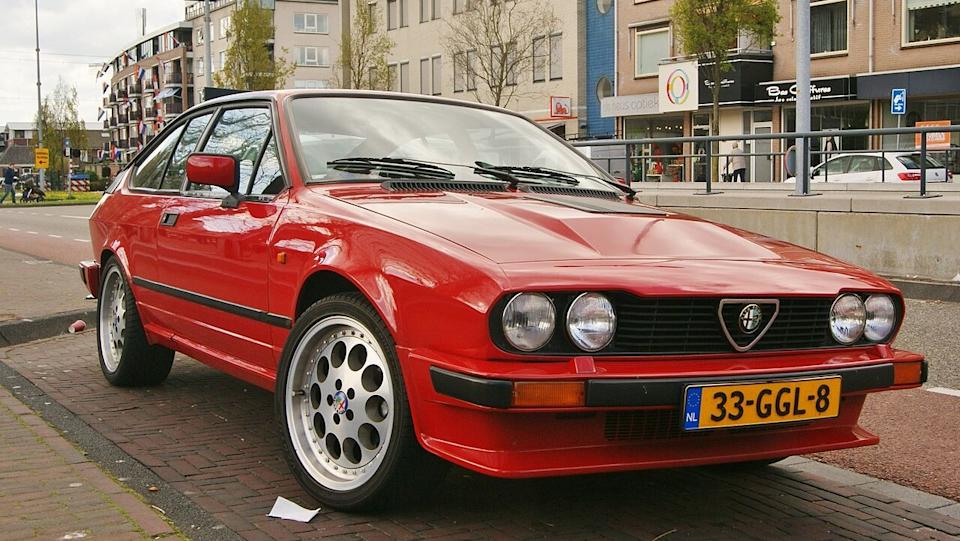
Each vehicle earned its spot by offering something most modern cars can't: a transmission that doesn't think it's more intelligent than you. We sought gearboxes with genuine personality, ones that rewarded skill rather than merely serving as a cheaper alternative to an automatic.
The criteria were straightforward: a shift feel that didn't feel like stirring pudding, clutch engagement that provided genuine feedback, and gear ratios that made sense rather than being optimized by an algorithm designed to squeeze out another 0.2 mpg. Historical significance mattered too, along with the kind of reputation that makes enthusiasts go misty-eyed at a local car meet.
Performance figures played a role, but so did character, that intangible quality that separates a machine from mere transportation. We wanted cars that made you want to take the long way home, even if gas was approaching $1.50 a gallon (the horror!).
In other words, yes, this is my opinion. I'm not ashamed to say it! If you have another manual car that rocked your world and leaves you with more fantasies than what could have been with your ex, let us know. There are too many to list, but always room to reminisce.
BMW M3 (E30)

The E30 M3 was Germany's response to the question, "What if we made a sedan that could embarrass Porsches on track days?" Its Getrag 265 5-speed was precision engineering, resulting in delightful crisp shifts.
The 2.3-liter S14 four-cylinder was essentially a Formula 1 engine that attended business school. BMW took their M1 supercar's motor, gave it some street manners, and somehow convinced regulators it was suitable for daily driving. 192 horsepower doesn't sound like much now, but this was back when horsepower figures weren't inflated like real estate prices in San Francisco.
That 6.7-second 0-60 time came with a soundtrack that made grown men weep; a mechanical symphony that started as a purr and climbed to a 7,000-rpm shriek that could wake the dead. The clutch pedal had more feel than most modern cars' entire chassis, and the shifter placement was so perfect it made you wonder why every other manufacturer was employing monkeys as ergonomics consultants.
The E30 M3 was the car that taught an entire generation that "understeer" was a four-letter word. It proved that Germans could build something with soul, even if they'd never admit they had feelings.
Mazda MX-5 Miata (NA)
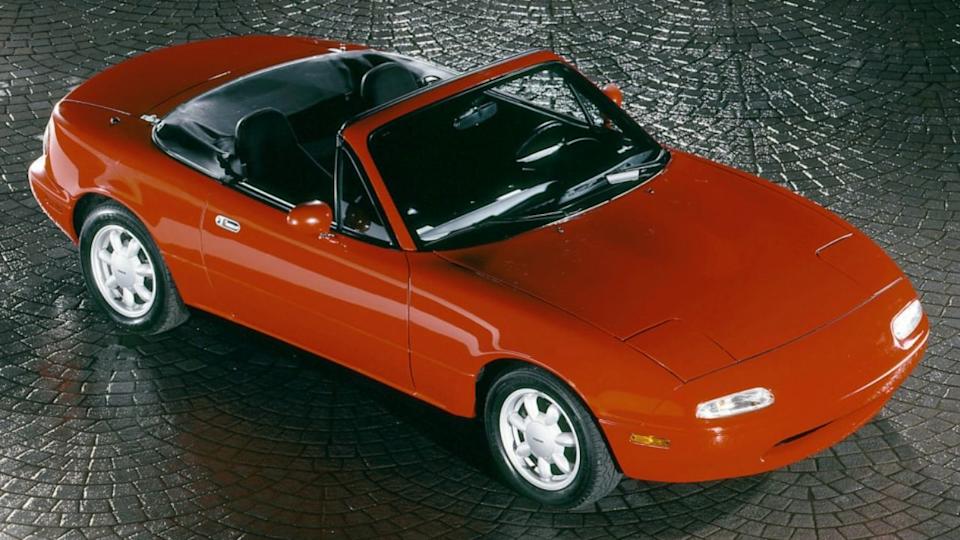
Before the Miata, sports cars were dying faster than disco. Everything was either a compromise-laden GT or some Italian exotic that spent more time at the mechanic than on the road. Then Mazda showed up with this little roadster that weighed less than a modern Honda Civic's safety manual and reminded us that driving was supposed to be fun. Stayin' alive, stayin' alive!
The NA Miata's 5-speed was like a mechanical Swiss watch — short throws, perfect gates, and a shifter that felt like it was connected directly to your nervous system. The 1.6-liter twin-cam made a mighty 116 hp, which in 1989 was enough to embarrass most "sports cars" simply by virtue of weighing less than a Mustang's engine.
That 8.6-second 0-60 time wasn't going to win any drag races, but the Miata wasn't about straight-line speed. It was about rediscovering that cars could communicate with their drivers through something other than warning lights and computer screens. The clutch was lighter than a modern power-steering pump, and heel-toe downshifting was so natural you'd wonder why other cars made it feel like performing surgery while riding a unicycle.
The Miata proved that "momentum car" wasn't an insult; it was a philosophy. Why brake for corners when you could shift down and dance through them? It single-handedly saved the roadster from extinction while teaching Americans that horsepower wasn't everything. Apparently, "slow car fast" was more fun than "fast car slow." Who knew?
Toyota MR2 (AW11)
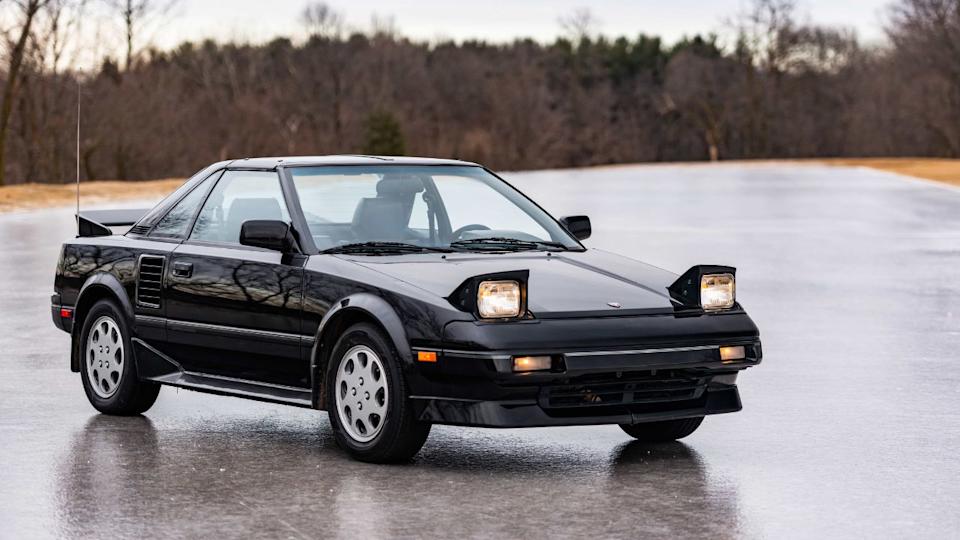
Toyota looked at the Miata and thought, "Cute, but what if we moved the engine behind the driver and added some turbo boost?" The result was the MR2 — part sports car, part physics experiment, and entirely capable of turning confident drivers into cautionary tales about lift-off oversteer.
The AW11's 5-speed was a mechanical marvel that made every gear change feel intentional. Short throws with tactile detents meant you always knew exactly which gear you'd selected; crucial information when you're trying to manage a mid-engine car's unique handling characteristics through a tight corner.
The naturally aspirated 4A-GE was Toyota's love letter to high-revving engines everywhere. 112 hp from 1.6 liters might not sound impressive until you realize this motor could rev to 7,500 rpm all day long while laughing at lesser engines. The powerband was linear, predictable, and intoxicating when you kept it on the boil.
That 8.1-second 0-60 time came with a side order of handling precision that would make a surgeon jealous. The MR2 taught drivers the difference between understeer (boring) and oversteer (terrifying but educational). The manual transmission was your lifeline in this relationship — a precise tool for managing weight transfer and keeping the car pointed in the general direction you intended to go.
The clutch engagement was telepathic, giving you precisely the feedback needed to modulate power delivery when the rear tires were getting philosophical about their relationship with the pavement. This was momentum driving at its finest — smooth inputs, perfect timing, and the constant awareness that physics was always keeping score.
Volkswagen GTI (Mk1)
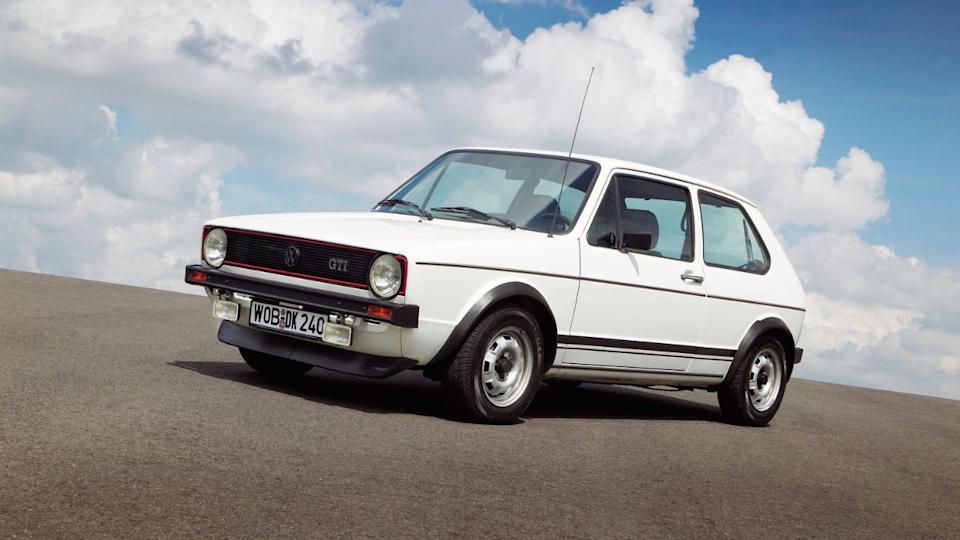
Before every manufacturer was stuffing turbocharged four-cylinders into their grocery getters and calling them "performance variants," Volkswagen accidentally invented the hot hatch. The original GTI was just a Golf that hit the gym, developed some attitude, and somehow changed automotive history in the process.
The Mk1's 5-speed gearbox felt so delicious that it was like a Michelin-starred chef cooked it up. Each shift was deliberate, mechanical, and satisfying in a way that modern transmissions can't replicate. The throws were perfect: long enough to feel substantial but short enough to keep you connected to the action. This was a gearbox that taught you to drive properly, whether you wanted to learn or not.
The 1.8-liter fuel-injected four made a respectable 90 hp, which doesn't sound like much until you remember the whole car weighed about as much as a modern SUV's spare tire. That 9.7-second 0-60 time was achieved with personality and drama — the engine loved to rev, the gearbox encouraged you to use all of it, and the whole experience felt like a mechanical symphony conducted by your right foot.
The GTI proved that front-wheel drive didn't have to be boring. The steering was direct enough to read Braille through, and the manual transmission let you use every bit of the engine's narrow powerband. Lift-off in a corner, and the back end would step out just enough to remind you that physics still applied, even in a front-driver.
This was the car that made "practical" and "fun" stop being mutually exclusive terms. It could haul your groceries, commute to work, and then spend weekends embarrassing supposedly "real" sports cars on twisty roads. The GTI wrote the blueprint that every hot hatch since has been trying to copy.
Porsche 944 Turbo
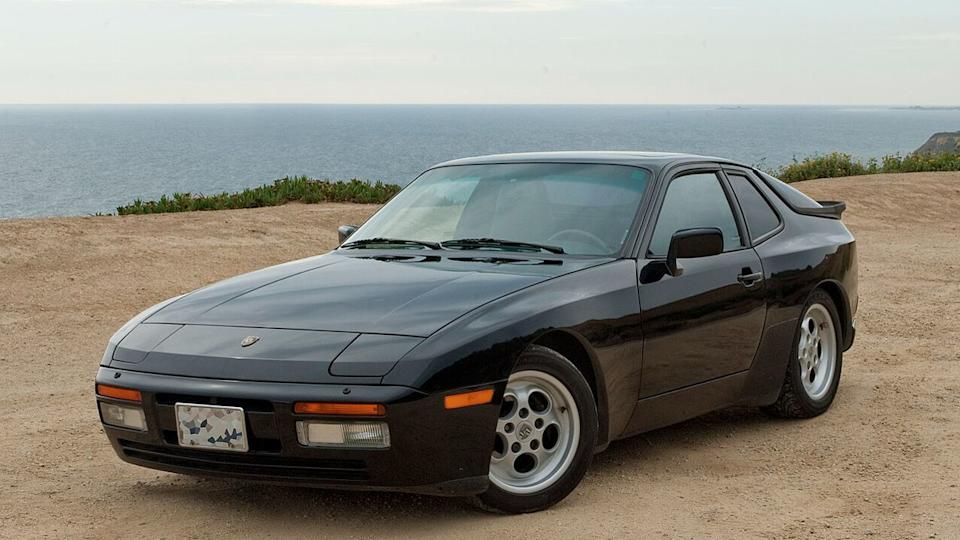
The 944 Turbo was Porsche's answer to critics who claimed the company couldn't build anything that didn't have its engine hanging off the back like some mechanical afterthought. They stuck a turbocharged four-cylinder up front, connected it to a transaxle in the rear, and created something that handled like a proper sports car instead of a physics experiment.
That rear-mounted 5-speed transaxle was engineering genius disguised as a transmission. By putting the gearbox in the back, Porsche achieved near-perfect weight distribution — something their 911 engineers were probably quietly jealous of. The shifter had to work through a complex linkage system, but somehow it still delivered precise, mechanical feedback that made every gear change feel meaningful.
The turbocharged 2.5-liter four pumped out 250 hp — proper supercar numbers in 1986. That 5.5-second 0-60 time was achieved with the kind of turbocharged surge that made your passengers question their life choices. The boost would build progressively, then hit like a caffeinated sledgehammer, pushing you back into seats that were designed by people who understood what "lateral forces" meant.
The 944 Turbo proved that Porsche could build a front-engine car that didn't handle like a drunk rhinoceros. The manual transmission was crucial to managing all that turbocharged power – you needed precise control over engine speed to keep the turbo spooled and the car pointed in the right direction.
This was a car that made compromise feel like a dirty word. It was comfortable enough for grand touring, fast enough for track days, and sophisticated enough to make 911 owners wonder if maybe, just maybe, having the engine in front wasn't such a crazy idea after all.
Ford Mustang GT (5.0)
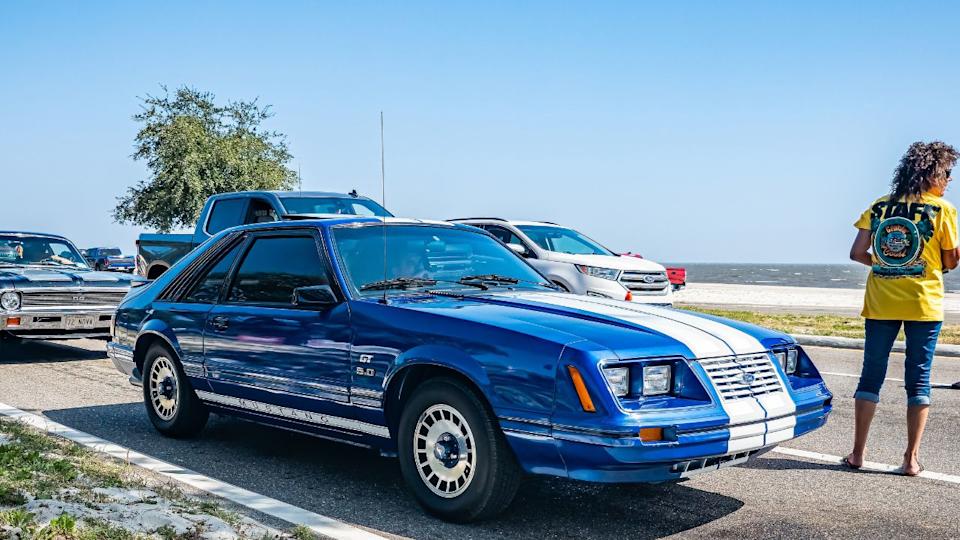
While European manufacturers were obsessing over sophisticated multi-valve engines and complex suspension systems, Ford took a different approach: "What if we just made it louder and gave it more torque?" The 5.0 Mustang GT was America's answer to the question nobody asked but everybody wanted the answer once they heard it.
The 5-speed manual felt appropriately muscle car-inspired, with long throws that required commitment, a heavy clutch that gave your left leg a workout, and a shifter that moved with the deliberate weight of American engineering. This wasn't a precision instrument; it was a tool designed for maximum durability and minimum complexity. Perfect for an engine that made its power through displacement and attitude rather than fancy technology.
The 5.0-liter V8 produced 175 hp, which sounds pathetic by modern standards, but came with 245 lb-ft of torque that hit like a truck at idle. This was an engine that didn't need to rev — it just pulled from anywhere in the powerband with the inexorable force of manifest destiny. That just-over-7-second 0-60 time came with a soundtrack that could drown out a Metallica concert.
The manual transmission was crucial to getting the most out of that torquey V8. You could short-shift at 3,000 rpm and still pull like a freight train, or wind it out to 5,500 rpm for maximum drama. Either way, every gear change was accompanied by a V8 rumble that reminded you why Americans never felt the need to build small-displacement engines.
The Mustang GT was wonderfully, unapologetically analog. No computers deciding when to shift, no electronic nannies preventing you from making poor decisions, just you, a manual transmission, and enough torque to break the tires loose in three gears. It was automotive democracy in action: fast, loud, and accessible to anyone with a functioning clutch foot.
Honda CRX Si
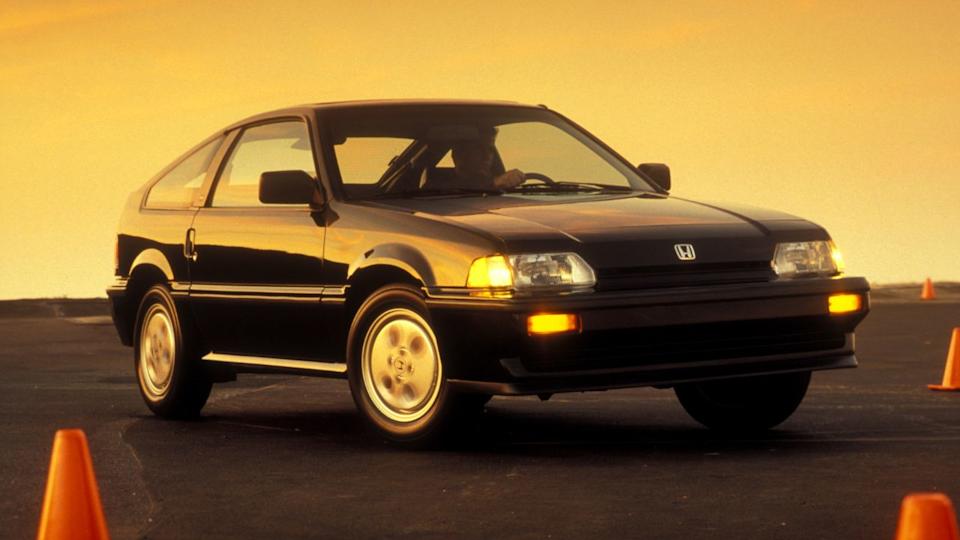
While everyone else was adding weight in the name of "refinement," Honda went the opposite direction with the CRX Si. They took everything unnecessary out of a Civic, added some aggression, and created a car that proved you didn't need big displacement to have big fun.
The 5-speed manual was Honda at their engineering best: precise gates, short throws, and the kind of mechanical accuracy that made you want to shift just for the joy of it. This wasn't a gearbox; it was a precision instrument that connected your intentions directly to the drivetrain with zero translation errors.
The 1.6-liter SOHC VTEC made 105 hp, which was extracted through the kind of high-revving magic that only Honda seemed to understand. This engine loved to rev; it practically begged you to keep it above 4,000 rpm where the powerband lived. That 8.5-second 0-60 time was achieved through momentum and enthusiasm rather than brute force.
The CRX Si taught an entire generation that "slow car fast" was a legitimate driving philosophy. You could use every bit of the car's performance on public roads without risking your license or your insurance rates. The manual transmission encouraged you to work the engine, use the gears, and drive the car instead of just pointing it in a direction and hoping for the best.
The clutch was light enough for city driving but engaging enough to give proper feedback. Heel-toe downshifting was natural, almost instinctive. This was a car that made commuting fun and turned mundane errands into an excuse for spirited driving. The CRX Si proved that automotive joy wasn't measured in horsepower numbers: it was measured in smiles per mile (sorry, had to say it).
Alfa Romeo GTV6
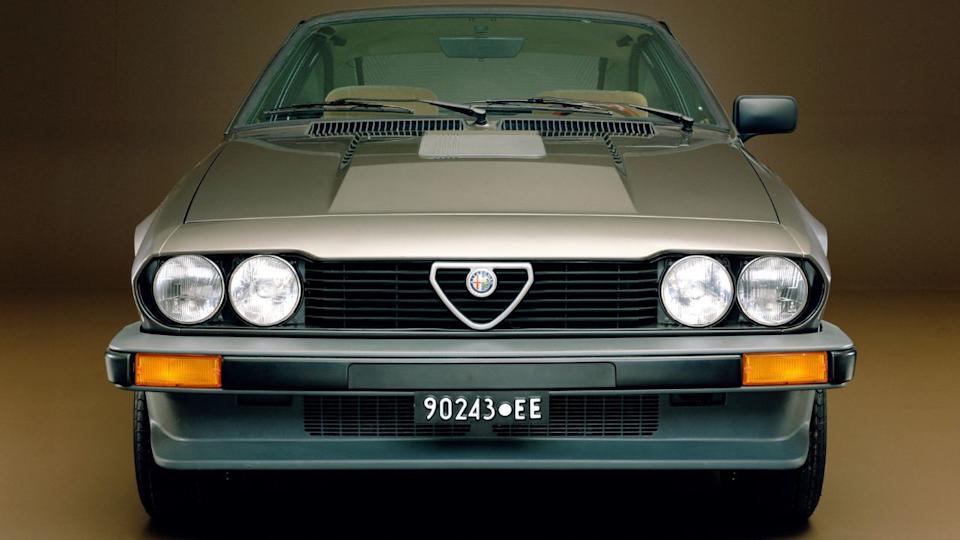
The Alfa Romeo GTV6 was Italy's reminder that cars were supposed to be emotional experiences, not just transportation appliances. This was automotive pasta: complex, satisfying, and occasionally prone to falling apart at the worst possible moment, but so delicious you'd forgive it anything. And maybe even want more even when you're full. Your garage can stuff one more in it, right?
The rear-mounted 5-speed transaxle was an engineering marvel that helped balance what would otherwise have been a nose-heavy grand tourer. Those long linkages meant the shifter had some travel, but every gate was precisely defined and mechanically satisfying. This was a transmission that encouraged deliberate, thoughtful inputs — perfect for an engine that rewarded finesse over brute force.
The 2.5-liter Busso V6 was pure automotive art. 154 hp was aight, but it came with a soundtrack that could make angels weep. This engine sang through its rev range with the kind of mechanical music that Ferrari charged extra for. That 8.4-second 0-60 time was accompanied by the most beautiful exhaust note this side of a Formula 1 grid.
The GTV6 was proof that Italians understood something about driving that other manufacturers missed: emotion matters. The manual transmission wasn't just a way to change gears; it was part of an experience that engaged all your senses. Every shift was deliberate, every clutch engagement was meaningful, and every drive was an opportunity to feel something beyond mere transportation.
This was a car that demanded involvement. The steering was direct, the clutch had real weight and feel, and the whole experience reminded you that driving could be an art form. Sure, the electrics were questionable and the rust protection was optional, but when everything worked, the GTV6 delivered pure automotive poetry.
Datsun 280ZX Turbo
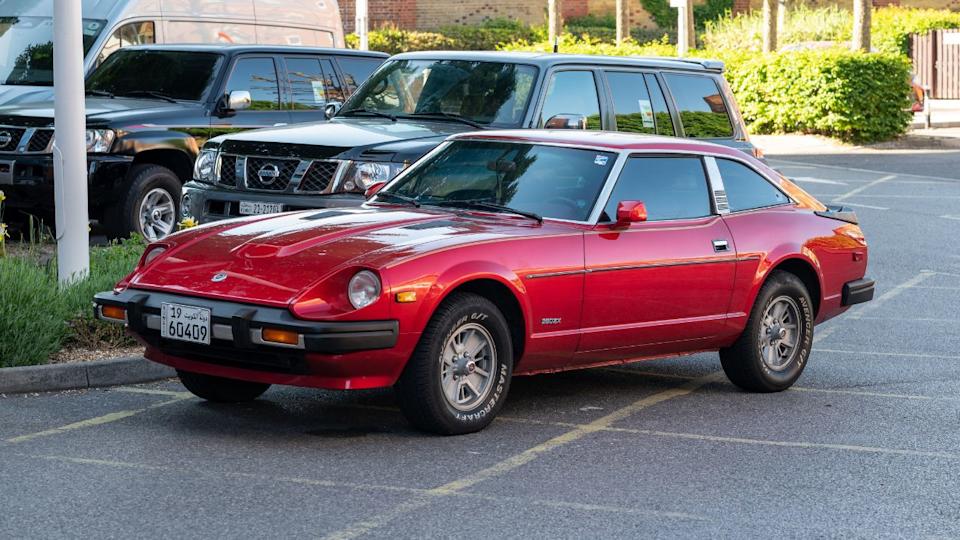
The 280ZX Turbo was Japan's entry into the "how much boost can we stuff into a sports car" competition (that nobody knew they were entering). While Porsche was perfecting turbocharging on the track, Datsun was figuring out how to make it work for regular humans who didn't have racing mechanics on speed dial.
The 5-speed manual had the kind of long, deliberate throws that made every gear change feel meaningful. This wasn't a quick-shifting sports car transmission; it was a tool designed for managing turbocharged power delivery with precision and control. The shifter moved with mechanical weight that matched the car's GT character perfectly.
The turbocharged 2.8-liter inline-six made 180 horsepower with the kind of smooth power delivery that made you forget you were driving a forced-induction engine. Unlike many early turbo motors that delivered power in binary on/off surges, the L28ET built boost progressively and predictably. That 7.4-second 0-60 time came with minimal drama and maximum confidence.
The 280ZX Turbo was designed for covering ground quickly and comfortably. The manual transmission lets you manage that turbocharged powerband precisely, keeping the engine on boost during spirited driving or cruising efficiently during long highway stretches. The clutch had enough weight to feel substantial, but not so much that city driving became a leg workout.
This was Japan's interpretation of the grand touring concept: fast enough to satisfy, comfortable enough for real-world use, and reliable enough that you could plan trips without researching nearby Datsun dealers. The 280ZX proved that turbocharged sports cars didn't have to be temperamental prima donnas.
Peugeot 205 GTI
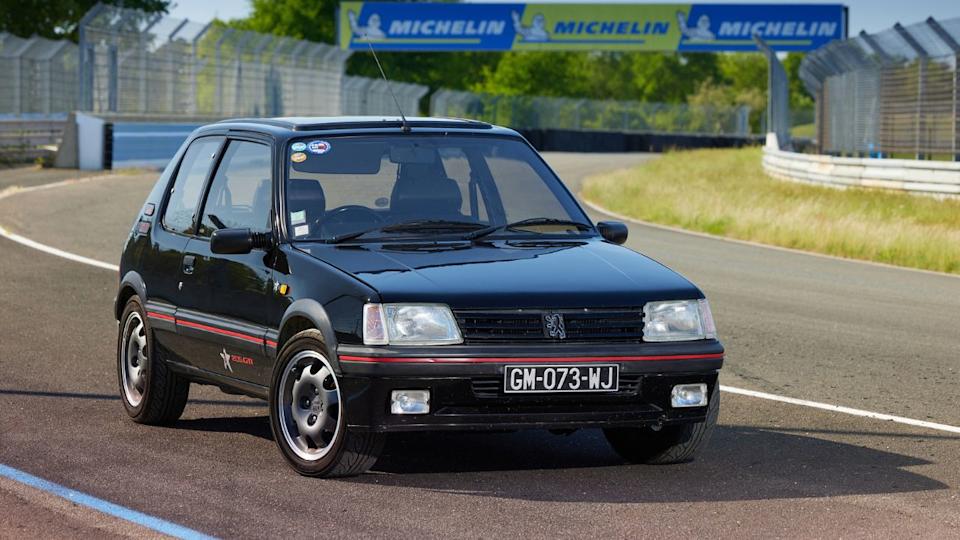
The 205 GTI was France's proof that they could build something other than comfortable highway cruisers and diesel economy cars. This little rocket ship rewrote the hot hatch rulebook by proving that less weight was more important than more power — a lesson most manufacturers are still struggling to learn.
The 5-speed manual was tight, precise, and perfectly matched to the engine's characteristics. Short throws connected you directly to the action, while the gear ratios were spaced to keep the naturally aspirated four-cylinder in its sweet spot. This was a transmission that encouraged you to use all of it, all the time.
The 1.6-liter four made 105 horsepower through high-compression magic and careful tuning. This engine loved to rev and rewarded drivers who kept it spinning. That 8.7-second 0-60 time was achieved through momentum rather than torque, but the whole experience was so engaging, you didn't care about the numbers.
The 205 GTI was the car that taught other manufacturers what "lift-off oversteer" meant. Properly driven, it would dance through corners with the grace of a ballet dancer. Improperly driven, it would spin faster than a laundromat on steroids while teaching you valuable lessons about physics and humility.
The manual transmission was crucial to extracting maximum enjoyment from the 205's chassis. You needed to keep the engine on cam, use the gears to manage weight transfer, and time your shifts to work with the car's natural rhythm. When everything came together, the 205 GTI delivered the driving purity that modern cars can only dream about.
Chevrolet Camaro Z28
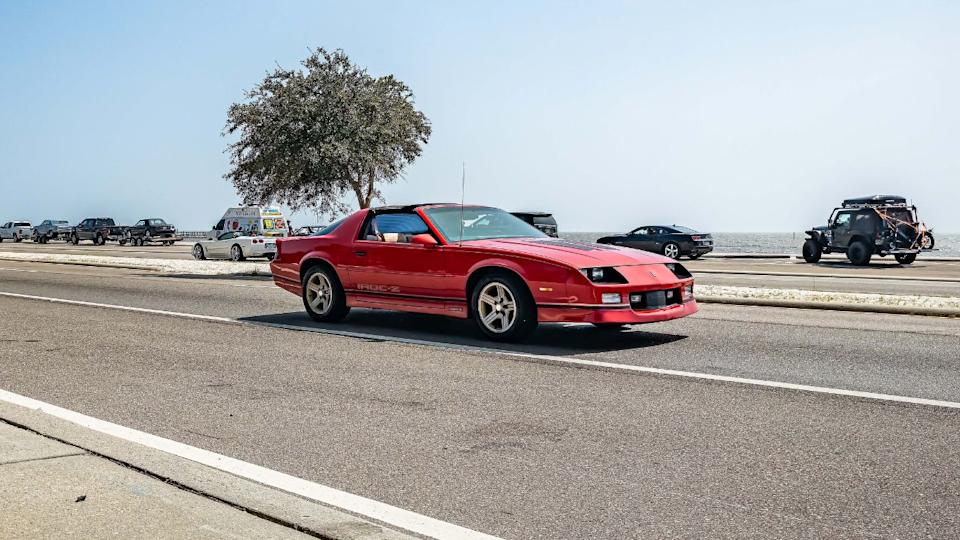
The Camaro Z28 was peak 1980s America: loud, proud, and completely unashamed of its blue-collar roots. While European manufacturers were getting sophisticated with fuel injection and multi-valve heads, Chevrolet stuck with the tried-and-true formula: big engine, manual transmission, and enough attitude to power a small city.
The 4-speed manual was built like a bank vault — heavy, mechanical, and designed to handle whatever abuse a 5.0-liter V8 could dish out. The throws were long enough to require commitment, and the shifter had the kind of weight that reminded you this wasn't some delicate European sports car. This was American iron, built for durability over refinement.
The 5.0-liter V8 made 165 hp, which sounds pathetic until you consider the torque curve looked like a table — flat, wide, and available everywhere. That 8.4-second 0-60 time came with the kind of V8 rumble that could set off car alarms three blocks away. This engine didn't need to rev; it just pulled from idle to redline with the inexorable force of American optimism.
The Z28 was proof that sophistication was overrated. Why complicate things with fancy technology when you could make it louder and give it more cubes? The manual transmission lets you control all that torque precisely, crucial when the rear tires were constantly negotiating their relationship with the pavement.
This was a car that made no apologies for what it was: a straight-line missile designed to turn unleaded gasoline into tire smoke and noise complaints. The Z28 represented everything great and terrible about American automotive culture – excessive, excellent, and entirely without shame.
Renault 5 Turbo 2
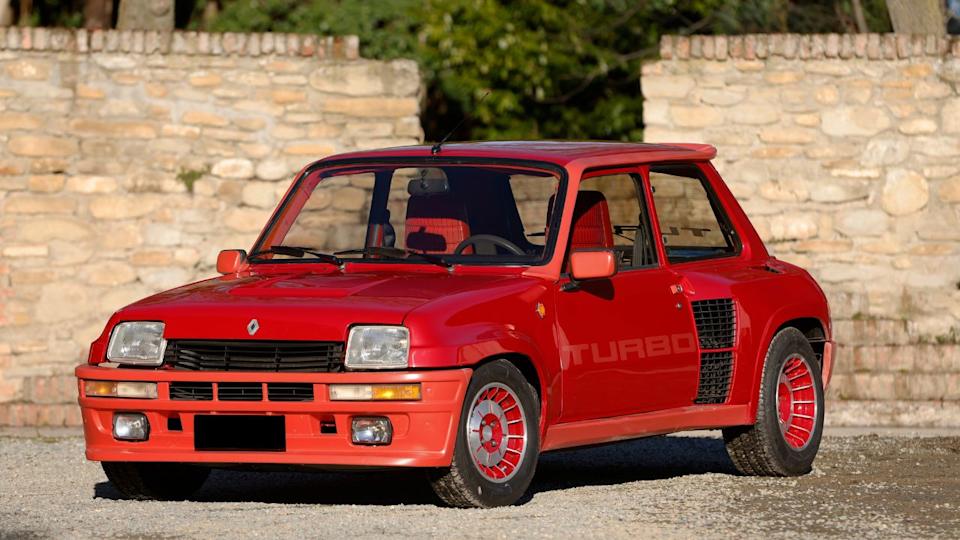
The Renault 5 Turbo 2 was the result of rally engineers being given a road car project with no practical constraints. This was a Group B refugee disguised as a city car: all the aggression of a rally weapon with just enough civility to make it technically street legal.
The 5-speed manual was positioned perfectly for the kind of aggressive driving this car demanded. High up on the console and close to hand, every shift was quick and precise. The throws were short enough for rapid-fire gear changes but mechanical enough to give proper feedback. This wasn't a gearbox; it was a rally tool adapted for public roads.
The 1.4-liter turbocharged four made 158 hp, which doesn't sound like much until you remember the whole car weighed about as much as a modern motorcycle. That 6.6-second 0-60 time was achieved through the kind of violent acceleration that made passengers question their life choices and their breakfast choices in equal measure.
The mid-engine layout meant this little Renault handled like a proper sports car rather than the economy car it resembled. The manual transmission was crucial for managing that turbocharged power delivery — you needed precise control over engine speed to keep the boost building and the car pointed in the right direction.
The Turbo 2 was France's reminder that they could build something completely insane when they put their minds to it. This was rally technology adapted for the street, with all the compromises that implied. It was loud, aggressive, and thoroughly impractical. In other words, absolutely perfect.
Saab 900 Turbo

The Saab 900 Turbo was Sweden's proof that you could build a turbocharged car that didn't require a PhD in boost management to drive safely. While other manufacturers were still figuring out how to make forced induction work reliably, Saab had already moved on to making it civilized and daily drivable.
The 5-speed manual featured Saab's signature console-mounted shifter, positioned perfectly for quick shifts without taking your eyes off the road. The throws were precise and mechanical, with a satisfying weight that matched the car's sophisticated character. This was a transmission designed for serious driving, not show.
The 2.0-liter turbocharged four made 143 hp with the kind of smooth, progressive power delivery that made you forget you were driving a forced-induction engine. The turbo lag was minimal, and when boost arrived, it came with Swedish restraint rather than German violence. That 9.1-second 0-60 time was achieved with refinement and control.
The 900 Turbo was the thinking person's performance car. It combined legitimate speed with genuine practicality, absolute comfort with actual handling ability. The manual transmission lets you exploit the turbocharged powerband while maintaining the car's civilized character. This was a car you could drive to a business meeting or a track day with equal confidence.
Saab proved that sophistication didn't require sacrifice. The 900 Turbo offered performance without drama, speed without compromise, and turbocharged power without the usual turbocharged penalties. It was Swedish engineering at its finest: thoughtful, practical, and slightly eccentric.
The Joy of the Manual Era

As the world moves away from what made driving great and instead shoves boxy, featureless EVs at us, we want to celebrate the cars that made us love being on the road, even if it was just a drive to the grocery store.
The 1980s were the last time manufacturers assumed their customers might want to shift their own gears. These cars came from an era when "driver engagement" wasn't a marketing buzzword — it was just how cars worked. You had three pedals, a stick, and if you couldn't operate them smoothly, everyone within a three-block radius would know about it.
Modern cars are undoubtedly faster, safer, and more efficient than anything from the 1980s. They're also about as engaging as watching paint dry in slow motion. Today's automatics shift faster than any human ever could, but they've also removed the last mechanical connection between driver and machine. We've gained convenience and lost our souls in the process.
These manual transmission heroes from the 1980s represent something we'll never see again: cars that demanded skill, rewarded practice, and punished incompetence. The manual transmission taught generations of drivers the fundamentals of vehicle dynamics, engine management, and mechanical sympathy. It was automotive education disguised as transportation. Today's cars require about as much skill to operate as a microwave oven, and the driving experience has suffered accordingly.
So here's to the last great manual transmission era — when cars still had clutch pedals, when drivers still knew how to heel-toe, and when the connection between human and machine flowed through a simple mechanical linkage that somehow contained the entire soul of the automobile. We didn't know how good we had it, but at least we can still remember what we've lost.
Like our content? Follow us for more. Read More:


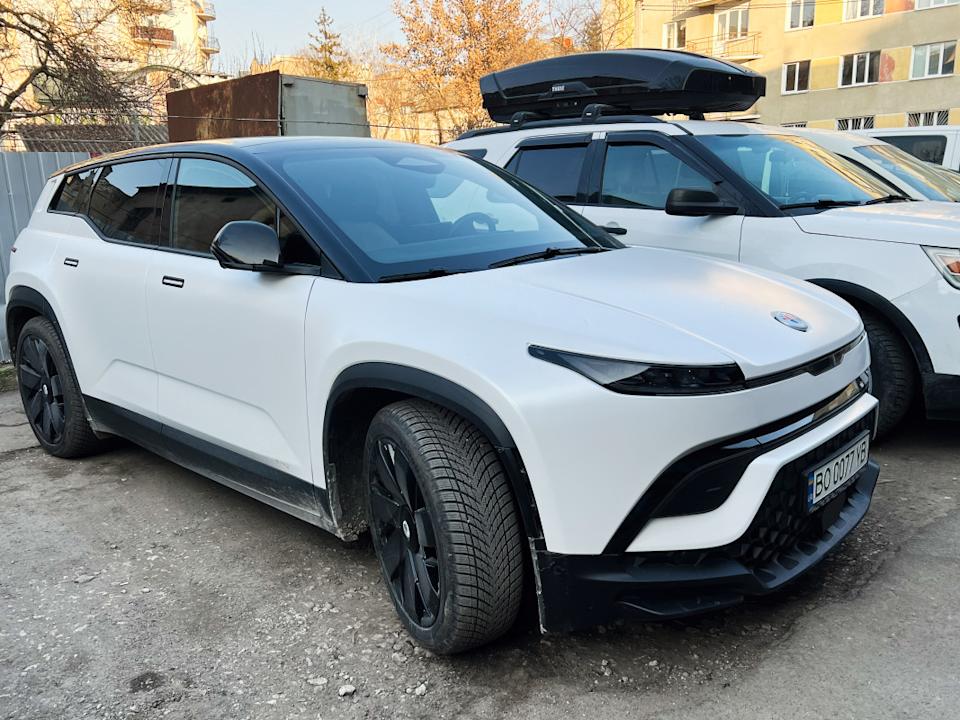
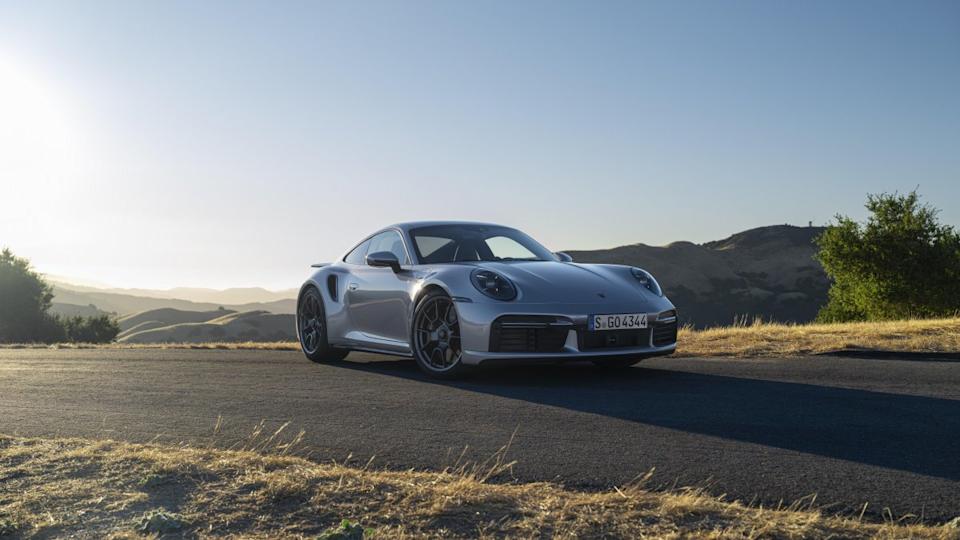
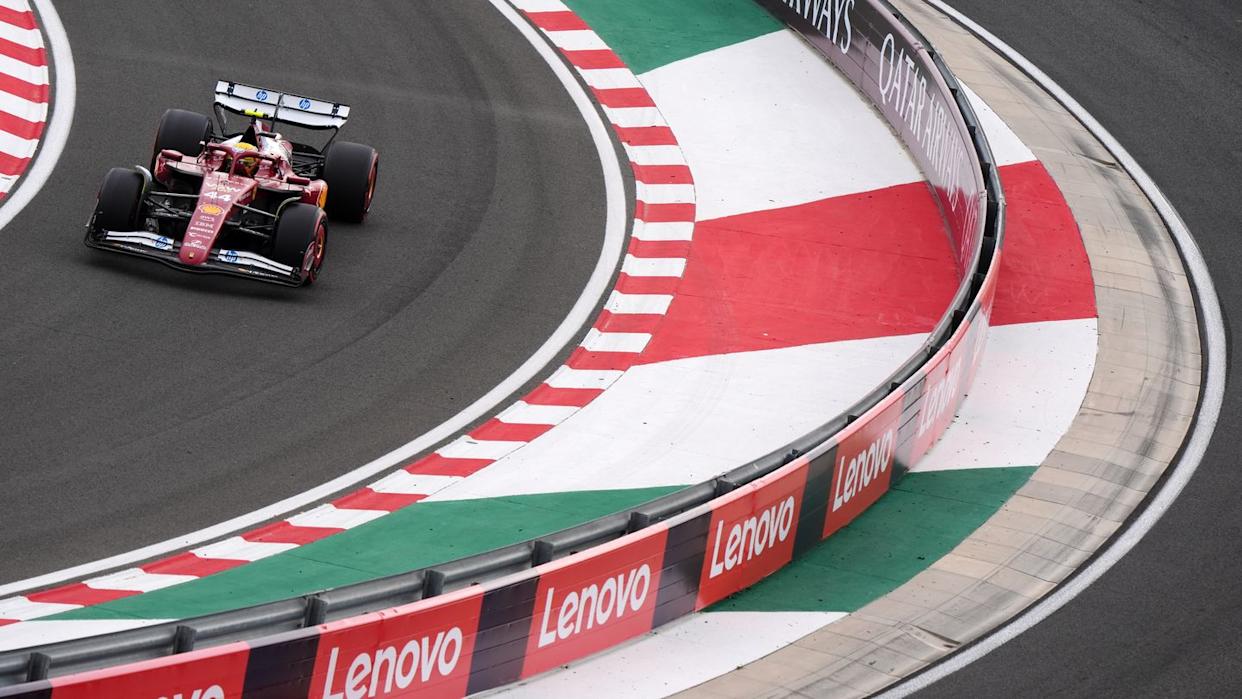
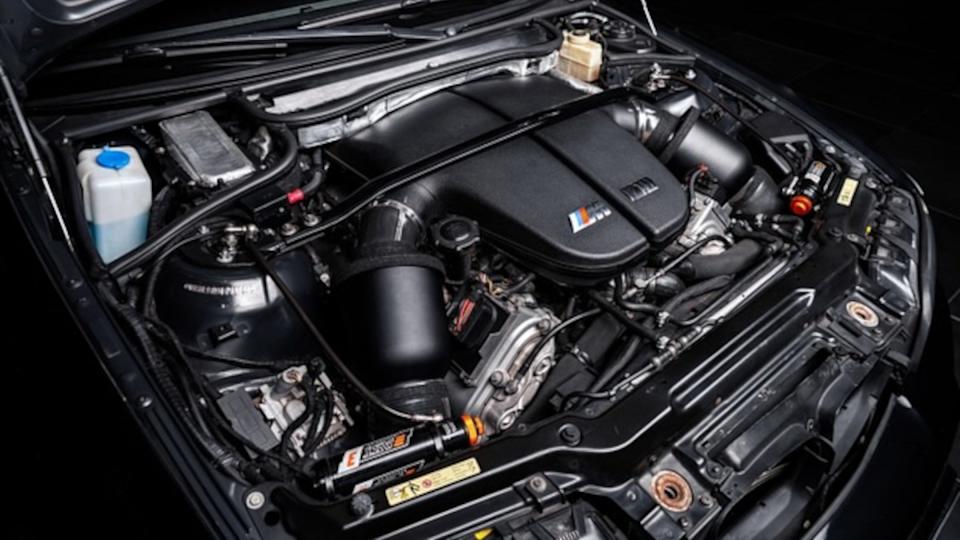
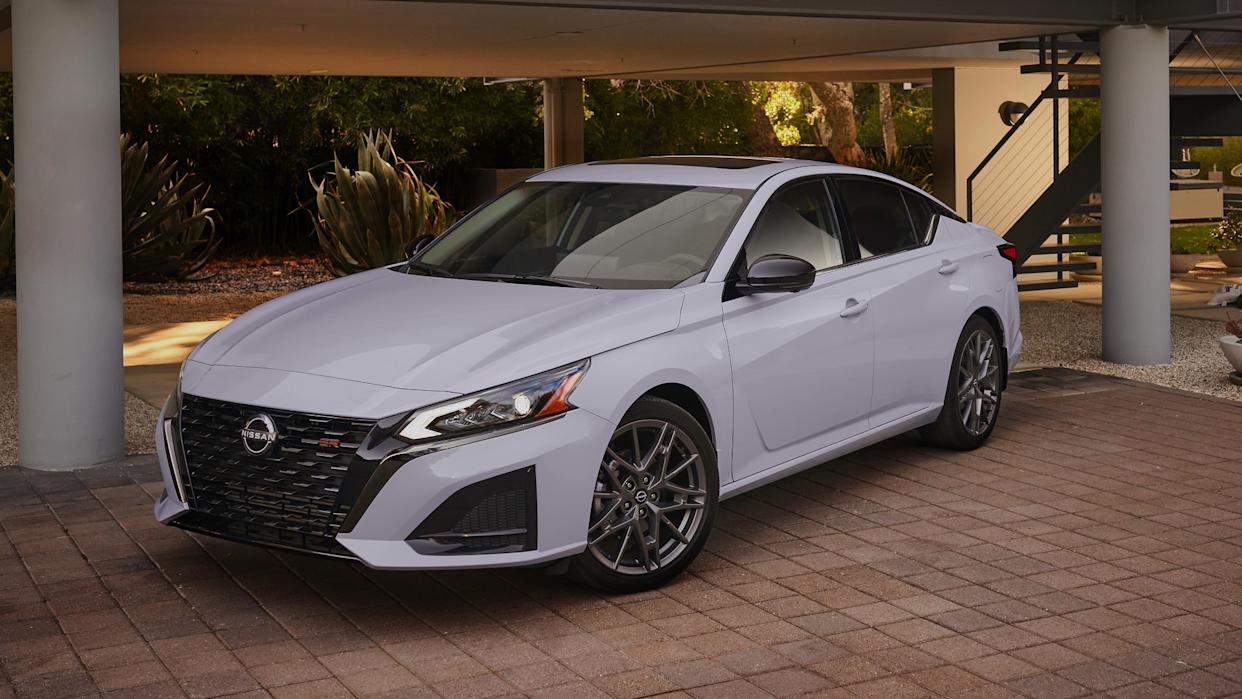
Comments